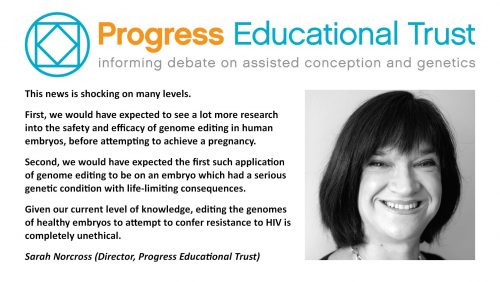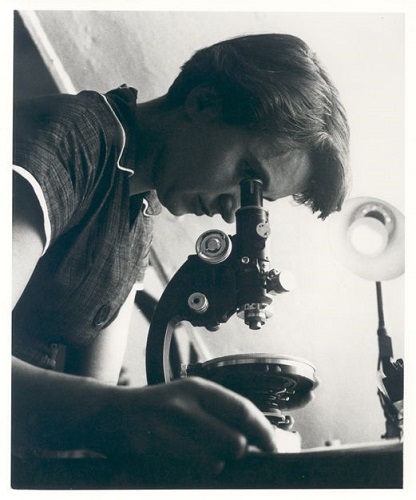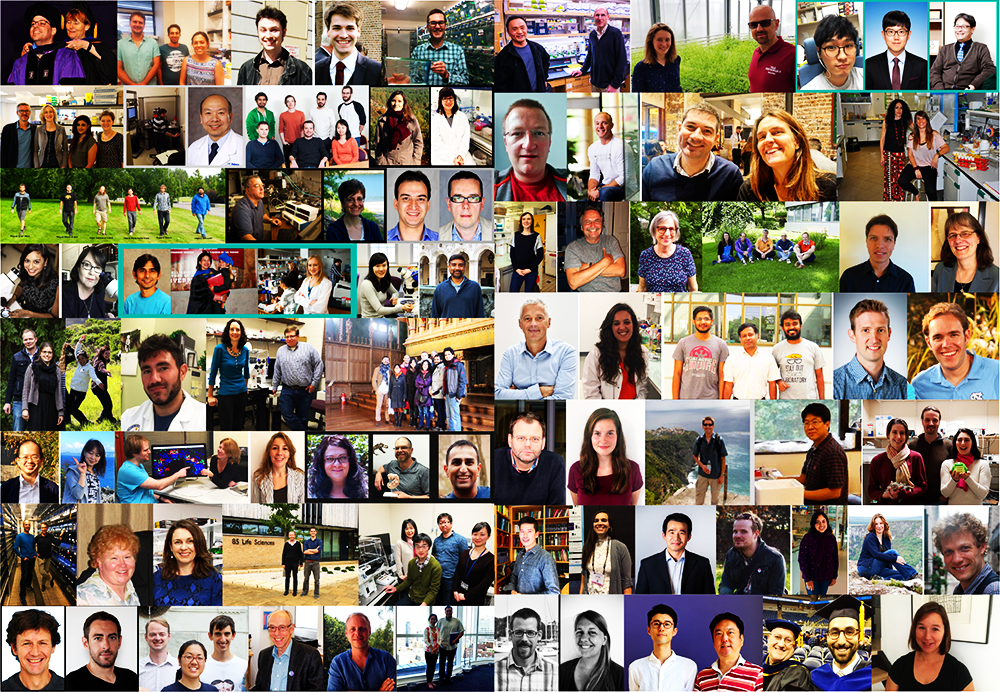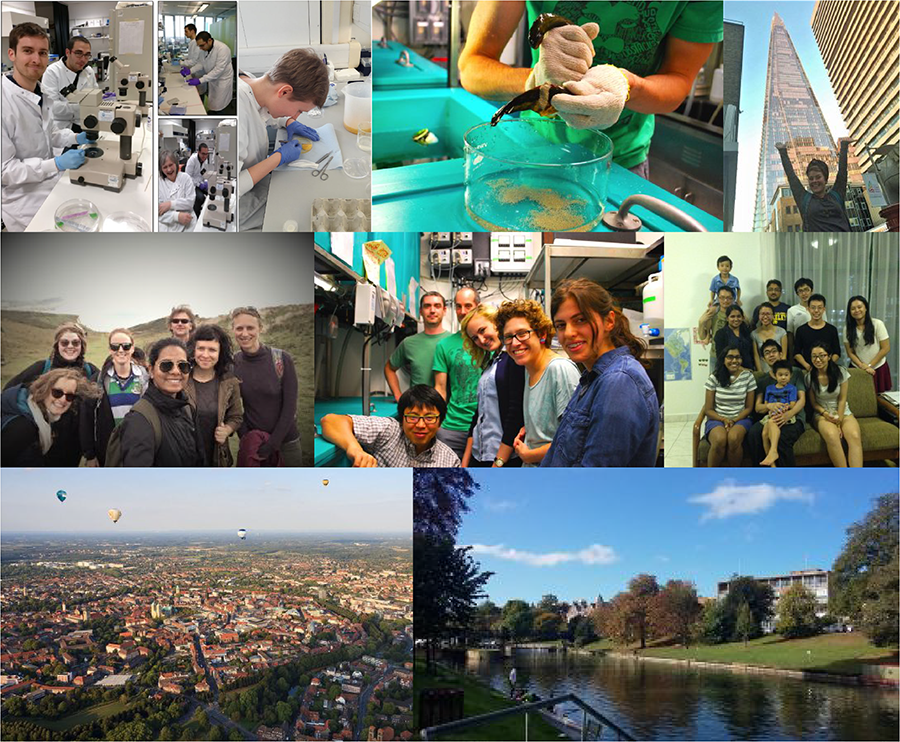November in preprints
Posted by the Node, on 4 December 2018
Welcome to our monthly trawl for developmental biology (and related) preprints.
This month’s haul includes a potful of plant development, new ways to mend broken hearts, an Alexa in the lab, and three preprints from Development’s recently appointed Editor Cassandra Extavour.
The preprints were hosted on bioRxiv, PeerJ, and arXiv. Let us know if we missed anything, and use these links to get to the section you want:
Developmental biology
| Stem cells, regeneration & disease modelling
Evo-devo & evo
Cell biology
Modelling
Tools & resources
Research practice & education
Why not…
Developmental biology
| Patterning & signalling
Intracellular pH controls Wnt signaling downstream of glycolysis in the vertebrate embryo
Masayuki oginuma, yukiko harima, Fengzhu Xiong, Olivier Pourquie
In vitro characterization of the human segmentation clock
Margarete Diaz-Cuadros, Daniel Wagner, Christoph Budjan, Alexis Hubaud, Jonathan Touboul, Arthur Michaut, Ziad Al Tanoury, Kumiko Yoshioka-Kobayashi, Yusuke Niino, Ryoichiro Kageyama, Atsushi Miyawaki, Olivier Pourquie

A Scube2-Shh feedback loop links morphogen release to morphogen signaling to enable scale invariant patterning of the ventral neural tube
Zach Collins, Kana Ishimatsu, Tony Tsai, Sean Megaso

A dual function of FGF signaling in Xenopus left-right axis formation
Isabelle Schneider, Jennifer Kreis, Axel Schweickert, Martin Blum, Philipp Vick

Fgf3 is crucial for the generation of monoaminergic cerebrospinal fluid contacting cells in zebrafish
Isabel Reuter, Jana Jaeckels, Susanne Kneitz, Jochen Kuper, Klaus-Peter Lesch, Christina Lillesaar
Osteocyte death and bone overgrowth in mice lacking Fibroblast Growth Factor Receptors 1 and 2 in mature osteoblasts and osteocytes
Jennifer McKenzie, Craig Smith, Kannan Karuppaiah, Joshua Langberg, Matthew J Silva, David M Ornitz

High-throughput micro-patterning platform reveals Nodal-dependent dissection of peri-gastrulation-associated versus pre-neurulation associated fate patterning
Mukul Tewary, Dominika Dziedzicka, Joel Ostblom, Laura Prochazka, Nika Shakiba, Curtis Woodford, Elia Piccinini, Alice Vickers, Blaise Louis, Nafees Rahman, Davide Danovi, Mieke Geens, Fiona Mary Watt, Peter W Zandstra
Genetic dissection of Nodal and Bmp signalling requirements during primordial germ cell development
Anna D Senft, Elizabeth K Bikoff, Elizabeth J Robertson, Ita Costello
Reevaluation of the Role of ERK3 in Perinatal Survival and Post-Natal Growth Using New Genetically-Engineered Mouse Models
Mathilde Soulez, Marc K Saba-El-Leil, Benjamin Turgeon, Simon Mathien, Philippe Coulombe, Sonia Klinger, Justine Rousseau, Kim Lévesque, Sylvain Meloche
Iron deficiency affects early stages of embryonic hematopoiesis but not the endothelial to hematopoietic transition
Maya Shvartsman, Saygın Bilican, Christophe Lancrin
Germline deletion reveals a non-essential role of the atypical MAPK6/ERK3
Natalia Ronkina, Karin Schuster-Gossler, Florian Hansmann, Heike Kunze-Schumacher, Inga Sandrock, Tatiana Yakovleva, Juri Lafera, Wolfgang Baumgärtner, Andreas Krueger, Immo Prinz, Achim Gossler, Alexey Kotlyarov, Matthias Gaestel
Rgs12 enhances osteoclastogenesis by suppressing Nrf2 activity and promoting the formation of reactive oxygen species
Andrew Ying Hui Ng, Ziqing Li, Megan M Jones, Chengjian Tu, Merry Jo Oursler, Jun Qu, Shuying Yang
Newly developed single-cell computational approach elucidates the stabilization of Oct4 expression in the E3.25 mouse preimplantation embryo
Daniela Gerovska, Marcos J. Araúzo-Bravo

Fetal and trophoblast PI3Kp110α have distinct roles in regulating resource supply to the growing fetus
Jorge Lopez-Tello, Vicente Perez-Garcia, Jaspreet Khaira, Laura C Kusinski, Wendy N Cooper, Adam Andrani, Imogen Grant, Edurne Fernandez de Liger, Myriam Hemberger, Ionel Sandovici, Miguel Constancia, Amanda N Sferruzzi-Perri
ATR function is indispensable to allow proper mammalian follicle development.
Sarai Pacheco, Montserrat Garcia Caldes, Ignasi Roig
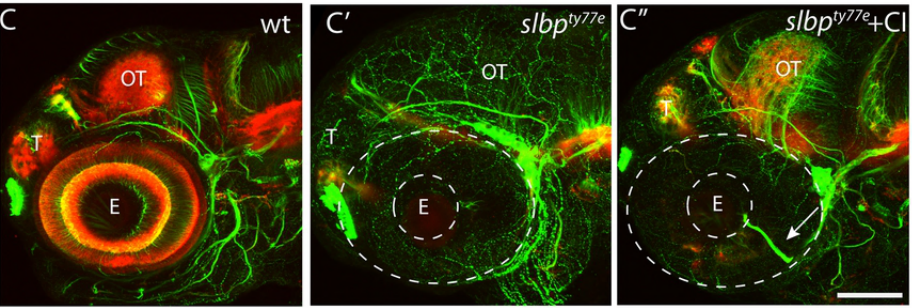
Abrogation of Stem Loop Binding Protein (Slbp) function leads to a failure of cells to transition from proliferation to differentiation, retinal coloboma and midline axon guidance deficits.
Kate Turner, Jaqueline Hoyle, Leonardo E Valdivia, Kara Cerveny, Wendy Hart, Maryam Mangoli, Robert Geisler, Michele Rees, Corinne Houart, Richard J Poole, Steve W Wilson, Gaia Gestri
Apical progenitors remain multipotent throughout cortical neurogenesis
Polina Oberst, Sabine Fievre, Natalia Baumann, Cristina Concetti, Denis Jabaudon
Tcf4 encodes cortical differentiation during development
Simone Mesman, Reinier Bakker, Marten Smidt
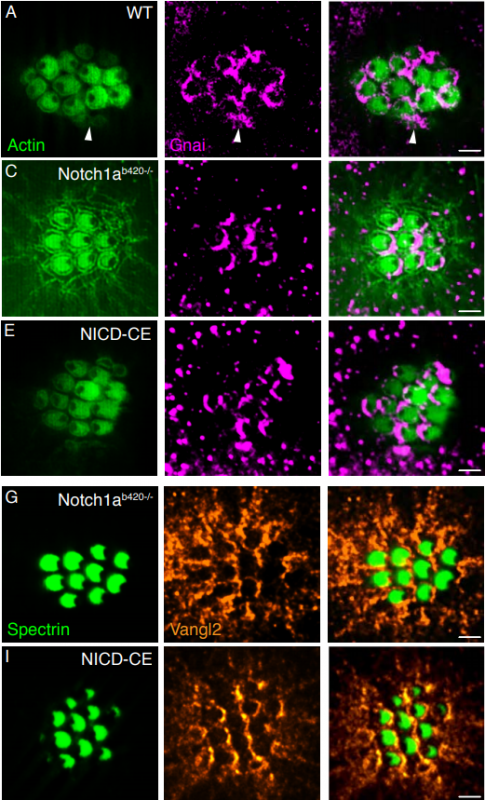
Notch-Mediated Polarity Decisions in Mechanosensory Hair Cells
Adrian Jacobo, Agnik Dasgupta, Anna Erzberger, Kimberly Siletti, Albert James Hudspeth
The BTB-ZF transcription factor Tramtrack 69 shapes neural cell lineages by coordinating cell proliferation and cell fate
Francoise Simon, Anne Ramat, Sophie Louvet-Vallee, Jerome Lacoste, Angelique Burg, Agnes Audibert, Michel Gho
Detailed analysis of chick optic fissure closure reveals Netrin-1 as an essential and conserved mediator of epithelial fusion during vertebrate embryogenesis.
Holly Hardy, James Prendergast, Aara Patel, Sunit Dutta, Violeta Trejo-Reveles, Hannah Kroeger, Andrea Yung, Lisa V Goodrich, Brian P Brooks, Jane Sowden, Joe Rainger
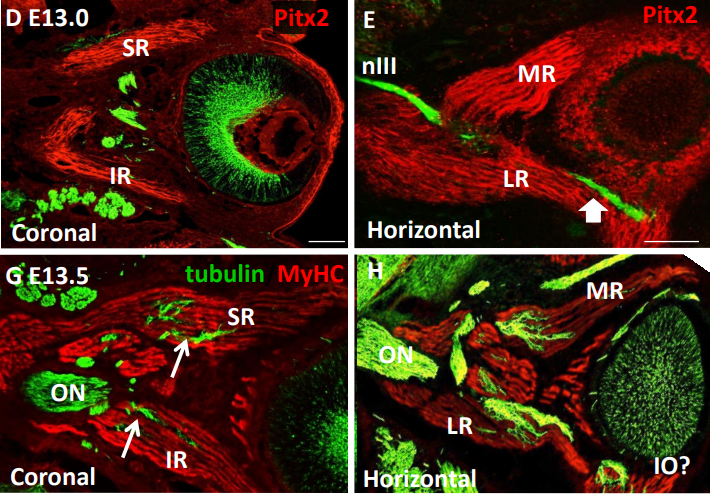
Oculomotor nerve requires an early interaction with muscle precursors for nerve guidance and branch patterning
Brielle Bjorke, Katherine G Weller, Gregory Eric Robinson, Michelle Vesser, Lisheng Chen, Philip J Gage, Thomas W Gould, Grant S Mastick
Onecut factors and Pou2f2 regulate the distribution of V2 interneurons in the mouse developing spinal cord
Audrey Harris, Gauhar Masgutova, Amandine Collin, Mathilde Toch, Maria Hidalgo-Figueroa, Benvenuto Jacob, Lynn M Corcoran, Cedric Francius, Frederic Clotman
Differential physiological role of BIN1 isoforms in skeletal muscle development, function and regeneration
Ivana Prokic, Belinda Simone Cowling, Candice Kutchukian, Christine Kretz, Hichem Tasfaout, Josiane Hergueux, Olivia Wendling, Arnaud Ferry, Anne Toussaint, Christos Gavriilidis, Vasugi Nattarayan, Catherine Koch, Jeanne Lainné, Roy Combe, Laurent Tiret, Vincent Jacquemond, Fanny Pilot-Storck, Jocelyn Laporte
The LIM-Only Protein FHL2 is Involved in Autophagy to Regulate the Development of Skeletal Muscle
Zihao Liu, Shunshun Han, Yan Wang, Haorong He, Xiaoxu Shen, Yuqi Chen, Can Cui, Yao Zhang, Lin Ye, Diyan Li, Xiaoling Zhao, Huarui Du, Xiaosong Jiang, Chunlin Yu, Qingyun Li, Qing Zhu, Chaowu Yang, Huadong Yin
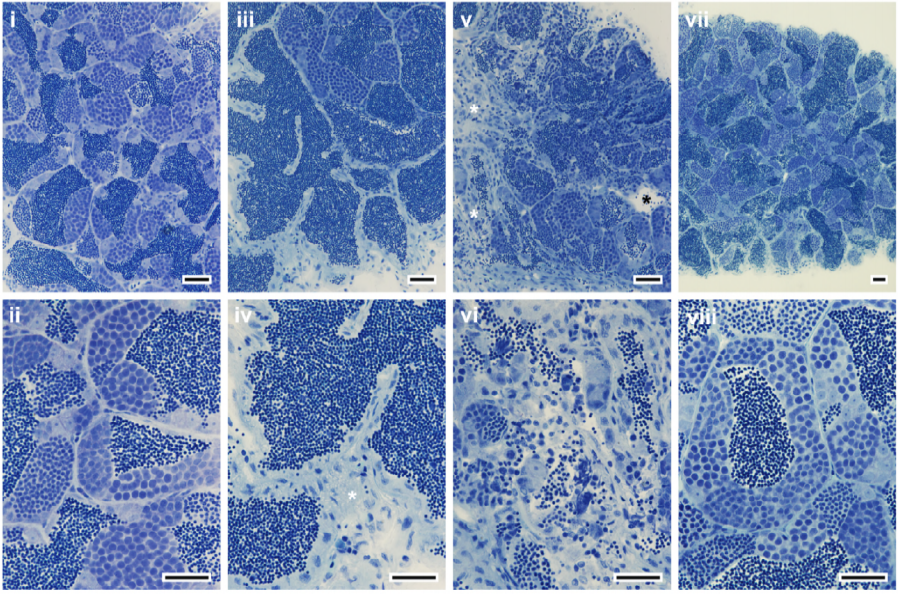
Retinoic acid and androgens interact to regulate spermatogenesis in a non-mammalian vertebrate lacking stra8
Diego Crespo, Luiz H.C. Assis, Henk J.G. van de Kant, Sjors de Waard, Diego Alejandro Safian, Moline S. Lemos, Jan Bogerd, Rüdiger W. Schulz
Drosophila anion exchanger 2 is required for proper ovary development and oogenesis
Marimar Benitez, Sumitra Tatapudy, Diane Barber, Todd Nystul
Chondroitin sulfate proteoglycan Windpipe modulates Hedgehog signaling in Drosophila
Masahiko Takemura, Fredrik Noborn, Jonas Nilsson, Eriko Nakato, Tsu-Yi Su, Göran Larson, Hiroshi Nakato

Inter-organ growth coordination is mediated by the Xrp1/Dilp8 axis in Drosophila
Laura Boulan, Ditte Andersen, Julien Colombani, Emilie Boone, Pierre Léopold
A Cyclin A – Myb-MuvB – Aurora B network regulates the choice between mitotic cycles and polyploid endoreplication cycles.
Michael Rotelli, Robert A. Policastro, Anna Bolling, Andrew Killion, Abraham Weinberg, Michael Dixon, Gabriel E Zentner, Claire E. Walczak, Mary A Lilly, Brian R Calvi
Glutamate signaling at cytoneme synapses
Hai Huang, Songmei Liu, Thomas B Kornberg
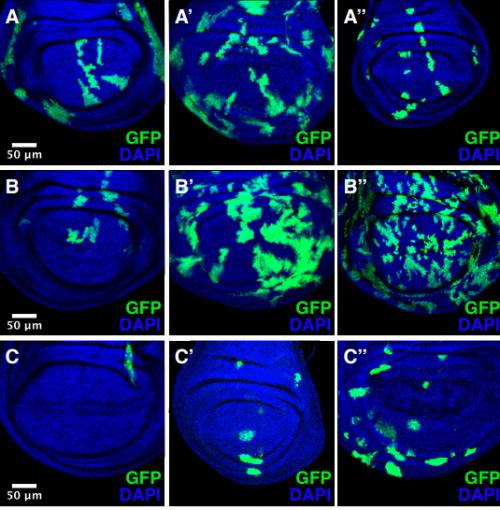
The Toll pathway inhibits tissue growth and regulates cell fitness in an infection-dependent manner
Federico Germani, Daniel Hain, Denise Sternlicht, Eduardo Moreno, Konrad Basler
Lipid Droplet metabolism dependent microbial defense in pre-immune zebrafish embryos
Asmita Dutta, Sampali Banerjee, Deepak Kumar Sinha
Prolonged quiescence delays somatic stem cell-like division in Caenorhabditis elegans and is controlled by insulin signalling
María Olmedo, Alejandro Mata Cabana, María Jesús Rodríguez Palero, Sabas García-Sánchez, Antonio Fernández Yáñez, Martha Merrow, Marta Artal-Sanz
Repression of an activity-dependent autocrine insulin signal is required for sensory neuron development in C. elegans.
Lauren Bayer Horowitz, Julia P. Brandt, Niels Ringstad
SKN-1/Nrf2 regulation of neuromuscular function in response to oxidative stress requires EGL-15/FGF Receptor and DAF-2/insulin Receptor signaling in Caenorhabditis elegans.
Sungjin Kim, Derek Sieburth
| Morphogenesis & mechanics
E-cadherin endocytosis is modulated by p120-catenin through the opposing actions of RhoA and Arf1
Joshua Greig, Natalia A. Bulgakova
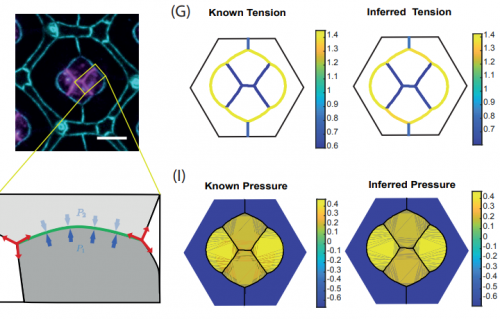
Force inference predicts local and tissue-scale stress patterns in epithelia
Weiyuan Kong, Olivier Loison, Pruthvi Chavadimane Shivakumar, Claudio Collinet, Pierre-François Lenne, Raphaël Clément

Trynity controls epidermal barrier function and respiratory tube maturation in Drosophila by modulating apical extracellular matrix nano-patterning
Yuki Itakura, Sachi Inagaki, Housei Wada, Shigeo Hayashi
Sprouting and anastomosis in the Drosophila trachea and the vertebrate vasculature: similarities and differences in cell behaviour
Maria Paraskevi Kotini, Maarja Andaloussi Mäe, Heinz-Georg Belting, Christer Betsholtz, Markus Affolter
Xenopus hybrids provide insight into cell and organism size control
Romain Gibeaux, Kelly Miller, Rachael Acker, Taejoon Kwon, Rebecca Heald
Desmoplakin is required for epidermal integrity and morphogenesis in the Xenopus laevis embryo
Amanda J.G. Dickinson, Navaneetha Krishnan Bharathan
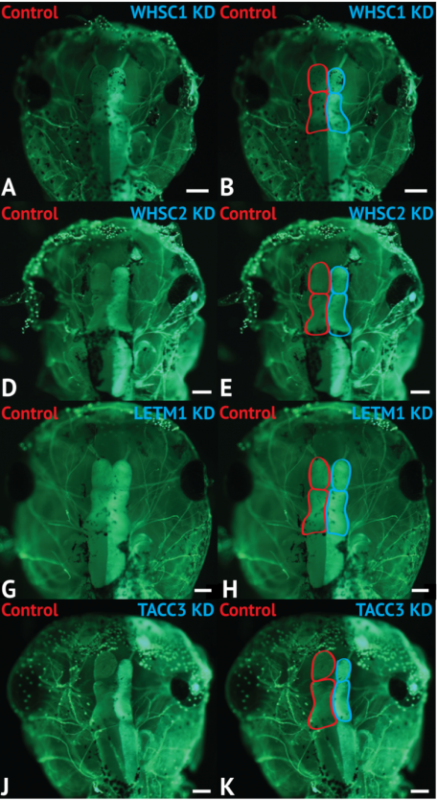
Wolf-Hirschhorn Syndrome-associated genes are enriched in motile neural crest and affect craniofacial development in Xenopus laevis
Alexandra Mills, Elizabeth Bearce, Rachael Cella, Seung Woo Kim, Megan Selig, Sangmook Lee, Laura A Lowery
A novel photoactivatable tool for intermediate filament disruption indicates a role for keratin filaments in early embryogenesis
Rucha Sanghvi-Shah, Shalaka Paranjpe, Jiyeon Baek, Radek Dobrowolski, Gregory Weber
Probing epithelial tissue rheology with a Stokes experiment
S. Tlili, C. Gay, B. Ladoux, F. Graner, H. Delanoë-Ayari
| Genes & genomes
Organ transformation by environmental disruption of epigenetic memory
Orli Snir, Michael Elgart, Filippo Ciabrelli, Shlomi Dagan, Iris Aviezer, Elizabeth Stoops, Giacomo Cavalli, Yoav Soen
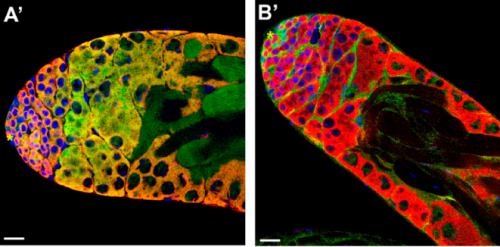
A kinesin Klp10A mediates cell cycle-dependent shuttling of Piwi between nucleus and nuage
Zsolt G Venkei, Charlotte Park Choi, Suhua Feng, Steven E Jacobsen, John K Kim, Yukiko M Yamashita
Differential phase partition of a PICS complex is required for piRNA processing and chromosome segregation in C. elegans
Chenming Zeng, Chenchun Weng, Xiaoyang Wang, Yong-Hong Yan, Wen-Jun Li, Demin Xu, Minjie Hong, Shanhui Liao, Xuezhu Feng, Meng-Qiu Dong, Chao Xu, Shouhong Guang
The Drosophila pioneer factor Zelda modulates the nuclear microenvironment of a Dorsal target enhancer to potentiate transcriptional output
Shigehiro Yamada, Peter H Whitney, Shao-Kuei Huang, Elizabeth C Eck, Hernan G Garcia, Christine A Rushlow
The Drosophila fussel gene is required for bitter gustatory neuron differentiation acting within an Rpd3 dependent chromatin modifying complex
View ORCID ProfileMathias Rass, Svenja Oestreich, Severin Guetter, Susanne Fischer, Stephan Schneuwly
Chromatin Accessibility Plays a Key Role in Selective Targeting of Hox Proteins
Damiano Porcelli, Bettina Fischer, Steven Russell, Robert White

The modular mechanism of chromocenter formation in Drosophila
Madhav Jagannathan, Ryan Cummings, Yukiko M Yamashita
Genetic analysis reveals novel roles for mei-MCMs during meiotic recombination in Drosophila
Talia Hatkevich, Jeff Sekelsky, Michaelyn Ann Hartmann, Kathryn P Kohl
Gene expression atlas of a developing tissue by single cell expression correlation analysis
Josephine Bageritz, Philipp Willnow, Erica Valentini, Svenja Leible, Michael Boutros, Aurelio A Teleman
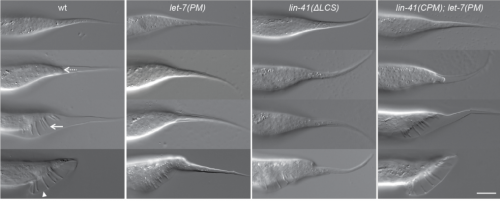
let-7 controls the transition to adulthood by releasing select transcriptional regulators from repression by LIN41
Florian Aeschimann, Anca Neagu, Magdalene Rausch, Helge Grosshans
The interplay between small RNA pathways shapes chromatin landscapes in C. elegans
Ekaterina Gushchanskaia, Ruben Esse, Qicheng Ma, Nelson Lau, Alla Grishok
Chromatin Compaction by Small RNAs and the Nuclear RNAi Machinery in C. elegans
Brandon D Fields, Scott Kennedy
MicroRNAs modulate alternative splicing in the C. elegans intestine and body muscle tissues
Kasuen Kotagama, Anna L Schorr, Hannah S Steber, Marco Mangone
Pioneer and nonpioneer cooperation drives lineage specific chromatin opening
Alexandre Mayran, Kevin Sochodolsky, Konstantin Khetchoumian, Juliette Harris, Yves Gauthier, Amandine Bemmo, Aurelio Balsalobre, Jacques Drouin
Maintenance of spatial gene expression by Polycomb-mediated repression after formation of a vertebrate body plan
Julien Rougot, Naomi D Chrispijn, Marco Aben, Dei M Elurbe, Karolina M Andralojc, Patrick J Murphy, Pascal WTC Jansen, Michiel Vermeulen, Bradley R Cairns, Leonie M Kamminga
Slow transcriptional elongation causes embryonic lethality and perturbs kinetic coupling of long neural genes
Magdalena M Maslon, Ulrich Braunschweig, Stuart Aitken, Abigail R Mann, Fiona Kilanowski, Chris J Hunter, Benjamin J Blencowe, Alberto R Kornblihtt, Ian R Adams, Javier F. Caceres
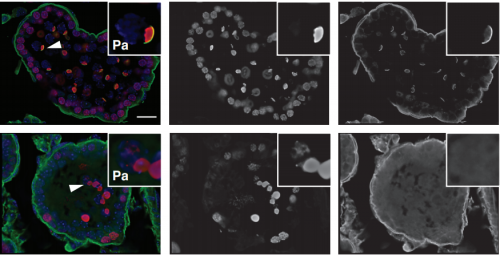
Mammalian SWI/SNF collaborates with a polycomb-associated protein to regulate male germ line transcription in the mouse
Debashish U Menon, Yoichiro Shibata, Weipeng Mu, Terry Magnuson
TH2BS12P histone mark is enriched in the unsynapsed axes of the XY body and predominantly associates with H3K4me3-containing genomic regions in mammalian spermatocytes
Aditya Mahadevan, Satyakrishna Pentakota, Raktim Roy, Utsa Bhaduri, Satyanarayana M R Rao
The mouse Klf1 Nan variant impairs nuclear condensation and erythroid maturation
Ileana Cantú, Harmen JG van de Werken, Nynke Gillemans, Ralph Stadhouders, Steven Heshusius, Alex Maas, Zeliha Ozgur, Wilfred van IJcken, Frank Grosveld, Marieke von Lindern, Sjaak Philipsen, Thamar B van Dijk
PETISCO is a novel protein complex required for 21U RNA biogenesis and embryonic viability
Ricardo J Cordeiro Rodrigues, Antonio Miguel de Jesus Domingues, Svenja Hellmann, Sabrina Dietz, Bruno de Albuquerque, Christian Renz, Helle D. Ulrich, Falk Butter, Rene Ketting
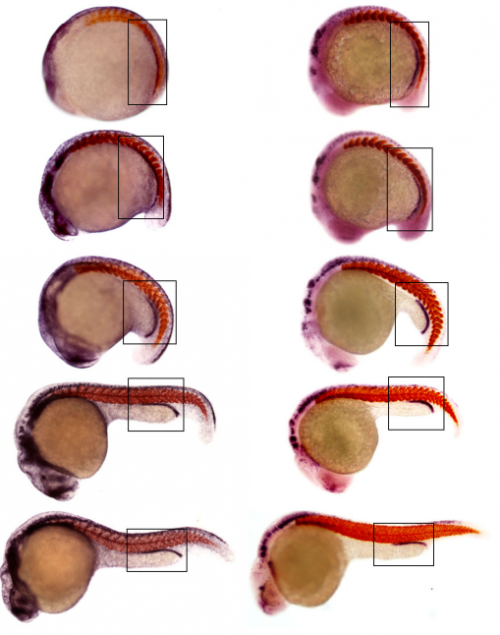
Tfap2a is a novel gatekeeper of differentiation in renal progenitors during kidney development
Brooke E. Chambers, Gary F. Gerlach, Karen H. Chen, Eleanor G. Clark, Ignaty Leshchiner, Wolfram Goessling, Rebecca A. Wingert
Cell-type-specific genomics reveals histone modification dynamics in mammalian meiosis
Kwan Wood Gabriel Lam, Kevin Brick, Gang Cheng, Florencia Pratto, R. Daniel Camerini-Otero
The long noncoding RNA Hand2as orchestrates heart development through regulation of precise expression of HAND2
Xue Han, Jiejie Zhang, Yaxi Liu, Xiaoying Fan, Shanshan Ai, Yingjie Luo, Xin Li, Sai Luo, Hui Zheng, Yanzhu Yue, Zai Chang, Zhongzhou Yang, Fuchou Tang, Aibin He, Xiaohua Shen
Genome-wide strategies reveal target genes of Npas4l associated with cardiovascular development in zebrafish
Michele Marass, Arica Beisaw, Claudia Gerri, Francesca Luzzani, Nana Fukuda, Stefan Guenther, Carsten Kuenne, Sven Reischauer, Didier Stainier
Inferring novel lncRNA associated with Ventricular septal defect by DNA methylation interaction network
Min Zhang, Yue Gu, Mu Su, Shumei Zhang, Chuangeng Chen, Wenhua Lv, View ORCID ProfileYan Zhang
Non-monotonic regulation of gene expression, neural progenitor fate and brain growth by the chromatin remodeller CHD8
Shaun Hurley, Conor Mohan, Philipp Suetterlin, Jacob Ellegood, Fabrizio Rudari, Jason P Lerch, Cathy Fernandes, M. Albert Basson
A novel method for systematic genetic analysis and visualization of phenotypic heterogeneity applied to orofacial clefts
Jenna Carlson, Deepti Anand, Azeez Butali, Carmen Buxo, Kaare Christensen, Frederic Deleyiannis, Jacqueline Hecht, Lina Moreno-Uribe, Ieda Orioli, Carmencita Padilla, John Shaffer, Alexandre Vieira, George Wehby, Seth Weinberg, Jeff Murray, Terri Beaty, Irfan Saadi, Salil Lachke, Mary Marazita, Eleanor Feingold, Elizabeth Leslie
Early divergence of mutational mechanisms drives genetic heterogeneity of fetal tissues
Ewart Kuijk, Francis Blokzijl, Myrthe Jager, Nicolle Besselink, Sander Boymans, Susana Chuva de Sousa Lopes, Ruben van Boxtel, Edwin Cuppen
Single cell transcriptomic analysis of the adult mouse pituitary reveals a novel multi-hormone cell cluster and physiologic demand-induced lineage plasticity
Yugong Ho, Peng Hu, Michael T Peel, Pablo G Camara, Hao Wu, Liehaber A Stephen
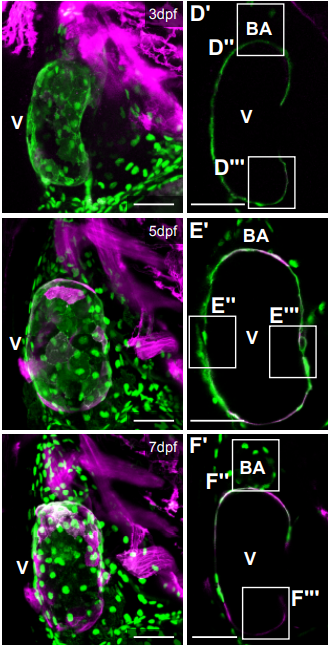
Functional heterogeneity within the developing zebrafish epicardium
Michael Weinberger, Filipa C. Simões, Roger Patient, Tatjana Sauka-Spengler, Paul R. Riley

Single-cell RNA-seq of the Developing Cardiac Outflow Tract Reveals Convergent Development of the Vascular Smooth Muscle Cells at the Base of the Great Arteries
Xuanyu Liu, Wen Chen, Wenke Li, James R. Priest, Jikui Wang, Zhou Zhou
Charting the emergent organotypic landscape of the mammalian gut endoderm at single-cell resolution
Sonja Nowotschin, Manu Setty, Ying-Yi Kuo, Vincent Liu, Vidur Garg, Roshan Sharma, Claire S Simon, Nestor Saiz, Rui Gardner, Stéphane C Boutet, Deanna M Church, Pamela A Hoodless, Anna-Katerina Hadjantonakis, Dana Pe’er
Prolactin Receptor Signaling Regulates a Pregnancy-Specific Transcriptional Program in Mouse Islets
Mark E. Pepin, Adam R. Wende, Ronadip R. Banerjee
Normal spermatogenesis in Fank1 (fibronectin type 3 and ankyrin repeat domains 1) mutant mice
Jintao Zhang, Xin Zhang1, Yue Zhang, Wentao Zeng, Shuqin Zhao, Mingxi Liu
DAZL is a master translational regulator of murine spermatogenesis
Haixin Li, Zhuqing Liang, Jian Yang, Dan Wang, Hanben Wang, Mengyi Zhu, Baobao Geng, Eugene Y. Xu
Sex differences in gene expression in the human fetal brain
Heath E O’Brien, Eilis Hannon, Aaron R Jeffries, William Davies, Matthew J Hill, Richard J Anney, Michael C O’Donovan, Jonathan Mill, Nicholas J Bray
Genetic control of gene expression and splicing in the developing human brain
Rebecca L Walker, Gokul Ramaswami, Christopher Hartl, Nicholas Mancuso, Michael J Gandal, Luis de la Torre-Ubieta, Bogdan Pasaniuc, Jason L Stein, Daniel H Geschwind
DEAH-box helicase 37 (DHX37) defects are a novel molecular etiology of 46,XY gonadal dysgenesis spectrum
Thatiana Evelin da Silva, Nathalia Lisboa Gomes, Antonio M Lerario, Catherine E Keegan, Mirian Yumie Y Nishi, Filomena M Carvalho, Eric Vilain, Hayk Barseghyan, Alejandro Martinez-Aguayo, Maria Verónica Forclaz, Regina Papazian, Luciani Renata Carvalho, Elaine Frade Costa, Berenice B Mendonca, Sorahia Domenice
Contribution of Retrotransposition to Developmental Disorders
Eugene J Gardner, Elena Prigmore, Giuseppe Gallone, Patrick J Short, Alejandro Sifrim, Tarjinder Singh, Kate E Chandler, Emma Clement, Katherine L Lachlan, Katrina Prescott, Elisabeth Rosser, David R FitzPatrick, Helen V Firth, Matthew E Hurles, Deciphering Developmental Disorders study
High-throughput functional analysis of lncRNA core promoters elucidates rules governing tissue-specificity
Kaia Mattioli, Pieter-Jan Volders, Chiara Gerhardinger, James C. Lee, Philipp G. Maass, Marta Mele, John L. Rinn
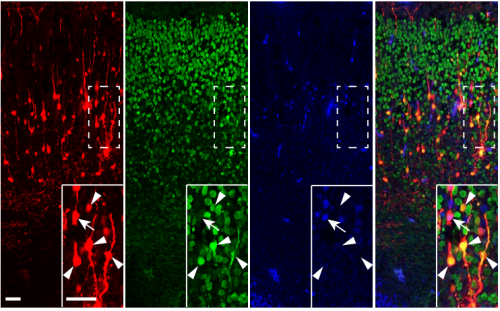
Long Non-Coding RNA LncKdm2b Regulates Cortical Neuronal Differentiation by Cis-Activating Kdm2b
Wei Li, Wenchen Shen, Bo Zhang, Kuan Tian, Yamu Li, Lili Mu, Zhiyuan Luo, Xiaoling Zhong, Xudong Wu, Ying Liu, Yan Zhou
Landscape of RNA editing reveals new insights into the dynamic gene regulation of spermatogenesis based on integrated RNA-Seq
Xiaodan Wang, Zhenshuo Zhu, Xiaolong Wu, Hao Li, Tongtong Li, Qun Li, Peng Zhang, Leijie Li, Dongxue Che, Xia Xiao, Jinlian Hua, Mingzhi Liao
The landscape of DNA methylation associated with the transcriptomic network in laying hens and broilers get insight into embryonic muscle development in chicken
Zihao Liu, Xiaoxu Shen, Shunshun Han, Yan Wang, Qing Zhu, Can Cui, Haorong He, Jing Zhao, Yuqi Chen, Yao Zhang, Lin Ye, Zhichao Zhang, Diyan Liu, Xiaoling Zhao, Huadong Yin
Exploring differentially expressed key genes related to development of follicle by RNA-seq in Peking ducks (Anas Platyrhynchos)
Jindong Ren, Changsen Sun, Li Chen, Jianhong Hu, Xuetao Huang, Xiaolin Liu, Lizhi Lu
| Stem cells, regeneration & disease modelling
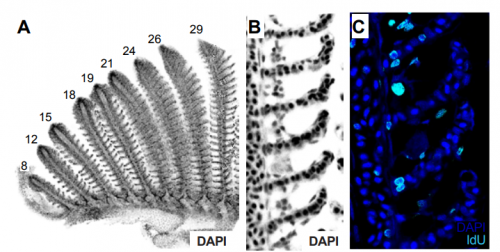
Hierarchical stem cell topography splits growth and homeostatic functions in the fish gill
Lazaro Centanin, Julian Stolper, Elizabeth Mayela Ambrosio, Diana-Patricia Danciu, David Elliott, Kiyoshi Naruse, Anna Marciniak-Czochra
Pluripotent Stem Cell-derived Cerebral Organoids Reveal Human Oligodendrogenesis with Dorsal and Ventral Origins
Hyosung Kim, Ranjie Xu, Padmashri Ragunathan, Anna Dunaevsky, Ying Liu, Cheryl Dreyfus, Peng Jiang
Basal stem cell fate specification is mediated by SMAD signaling in the developing human lung
Alyssa J. Miller, Quanhui Yu, Michael Czerwinski, Yu-Hwai Tsai, Renee F. Conway, Angeline Wu, Emily M. Holloway, Taylor Walker, Ian A. Glass, Barbara Treutlein, J. Gray Camp, Jason R. Spence
Identification of slow-cycling germline stem cells and their regulation by PLZF
Robert E Braun, Manju Sharma, Anuj Srivastava, Heather E Fairfield, David Bergstrom, William F Flynn
Heterochromatin protein 1 (HP1) is intrinsically required for post-transcriptional regulation of Drosophila Germline Stem Cell (GSC) maintenance
Assunta Maria Casale, Ugo Cappucci, Laura Fanti, Lucia Piacentini
Stem cell receptor degradation by niche cells restricts signalling
Sophia Ladyzhets, Mayu Inaba
fruitless functions downstream of doublesex to promote sexual dimorphism of the gonad stem cell niche
Hong Zhou, Cale Whitworth, Caitlin Pozmanter, Megan C. Neville, Mark Van Doren
Glia mediated ionic balance in the stem cell niche is required for the proper proliferation of neurogenic tissues and wiring of neural circuits.
Haritz Plazaola-Sasieta, Qi Zhu, Hector Gaitan-Penas, Martin Rios, Raul Estevez, Marta Morey
X Chromosome Dosage Modulates Multiple Molecular and Cellular Properties of Mouse Pluripotent Stem Cells Independently of Global DNA Methylation Levels
Juan Song, Adrian Janiszewski, Natalie De Geest, Lotte Vanheer, Irene Talon, Mouna El Bakkali, Taeho Oh, Vincent Pasque
Interactome comparison of human embryonic stem cell lines with the inner cell mass and trophectoderm
Adam Stevens, Helen Smith, Terence Garner, Ben Minogue, Sharon Sneddon, Lisa Shaw, Rachel Oldershaw, Nicola Bates, Daniel Brison, Susan Kimber
High Throughput Mechanobiological Screens Enable Mechanical Priming of Pluripotency in Mouse Fibroblasts
Jason Lee, Miguel Ochoa, Pablo Maceda, Eun Yoon, Lara Samarneh, Mitchell Wong, Aaron B Baker
Transient activation of the UPRER is an essential step in the acquisition of pluripotency during reprogramming
Milos Simic, Erica Moehle, Robert Schinzel, Franziska Lorbeer, Damien Jullie, Jonathan Halloran, Kartoosh Heydari, Melissa Sanchez, Dirk Hockemeyer, Andrew Dillin
Non-cell-autonomous promotion of pluripotency induction mediated by YAP
Amaleah Hartman, Xiao Hu, Xinyue Chen, Anna E Eastman, Cindy Yang, Shangqin Guo
TCF7L1 and TCF7 differentially regulate specific mouse ES cell genes in response to GSK-3 inhibition
Steven Moreira, Caleb Seo, Enio Polena, Sujeivan Mahendram, Eloi Mercier, Alexandre Blais, Bradley Doble
Environmental Optimization Enables Maintenance of Quiescent Hematopoietic Stem Cells Ex Vivo
Hiroshi Kobayashi, Takayuki Morikawa, Ayumi Okinaga, Fumie Hamano, Tomomi Hashidate-Yoshida, Shintaro Watanuki, Daisuke Hishikawa, Hideo Shindou, Fumio Arai, Yasuaki Kabe, Makoto Suematsu, Takao Shimizu, Keiyo Takubo
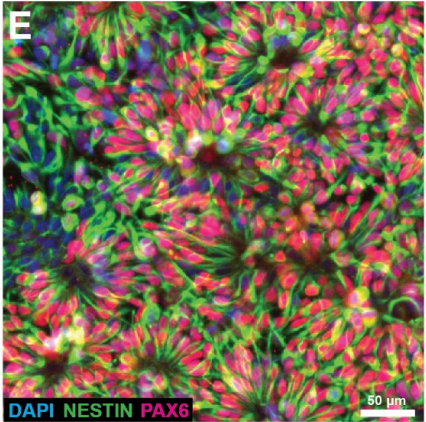
Genome-wide screens in accelerated human stem cell-derived neural progenitor cells identify Zika virus host factors and drivers of proliferation
Michael F Wells, Max R Salick, Federica Piccioni, Ellen J Hill, Jana M Mitchell, Kathleen A Worringer, Jospeph J Raymond, Sravya Kommineni, Karrie Chan, Daniel Ho, Brant K Peterson, Marco T Siekmann, Olli Pietilainen, Ralda Nehme, Ajamete Kaykas, Kevin Eggan
Human Dental Pulp Stem Cells Grown In Neurogenic Media Differentiate Into Endothelial Cells And Promote Neovasculogenesis In The Mouse Brain.
Jon Luzuriaga, Oier Pastor-Alonso, Juan Manuel Encinas, Fernando Unda, Gaskon Ibarretxe, Jose R. Pineda
The iPSC proteomic compendium
Alejandro Brenes, Dalila Bensaddek, Jens Hukelmann, Vackar Afzal, Angus I Lamond
Neuropilin 1 mediates epicardial activation and revascularization in the regenerating zebrafish heart
Vanessa Lowe, Laura Wisniewski, Jacob Sayers, Paul Frankel, Nadia Mercader, Ian C Zachary, Caroline AP Pellet-Many
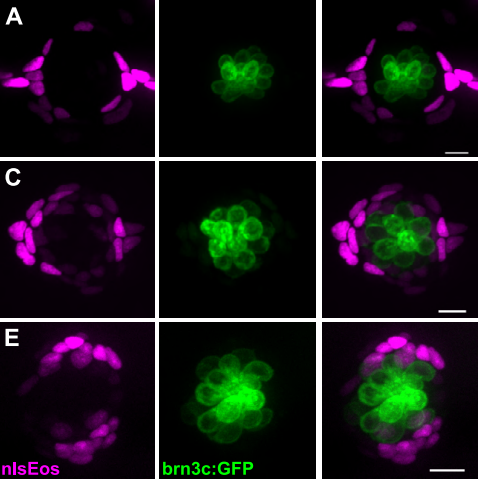
Distinct progenitor populations mediate regeneration in the zebrafish lateral line.
Eric D Thomas, David Raible
Effects of BMP-2 on neovascularization during large bone defect regeneration
Hope B Pearson, Devon E Mason, Christopher D Kegelman, Liming Zhao, James Dawahare, Melissa A Kacena, Joel D Boerckel
Scleraxis Lineage Cells Contribute to Organized Bridging Tissue During Tendon Healing, and Identifies Subpopulations of Resident Tendon Cells
Katherine T Best, Alayna Loiselle
PDGFRα signaling in cardiac fibroblasts modulates quiescence, metabolism and self-renewal, and promotes anatomical and functional repair
Naisnana S Asili, Munira Xaymardan, Elvira Forte, Ashley J Waardenberg, James Cornwell, Vaibhao Janbandhu, Scott Kesteven, Vashe Chandrakanthan, Helena Malinowska, Henrik Reinhard, Sile F Yang, Hilda A Pickett, Peter Schofield, Daniel Christ, Ishtiaq Ahmed, James Chong, Corey Heffernan, Joan Li, Mary Simonian, Romaric Bouveret, Surabhi Srivastava, Rakesh K Mishra, Jyotsna Dhawan, Robert Nordon, Peter Macdonald, Robert M Graham, Michael Feneley, Richard P Harvey
Deriving Cardiomyocytes from Human Amniocytes
Colin T. Maguire, Ryan Sunderland, Bradley L Demarest, Bushra Gorsi, Joshua Jackson, ANGELICA LOPEZ-IZQUIERDO, Martin Martin Tristani-Firouzi, H. Joseph Yost, Maureen L Condic
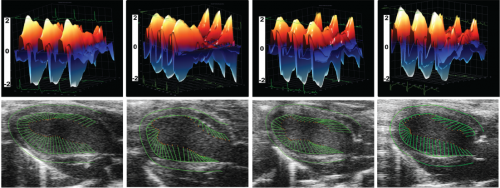
In vivo generation of post-infarct mouse cardiac muscle by cardiomyocyte progenitors produced with a reproducible laminin-promoted human stem cell differentiation system
Lynn Yap, Jiong-Wei Wang, Aida Moreno-Moral, Li Yen Chong, Yi Sun, Nathan Harmston, Xiaoyuan Wang, Suet Yen Chong, Miina K. Ohman, Heming Wei, Ralph Bunte, Sujoy Ghosh, Stuart Cook, Outi Hovatta, Dominique P.V. de Kleijn, Enrico Petretto, Karl Tryggvason
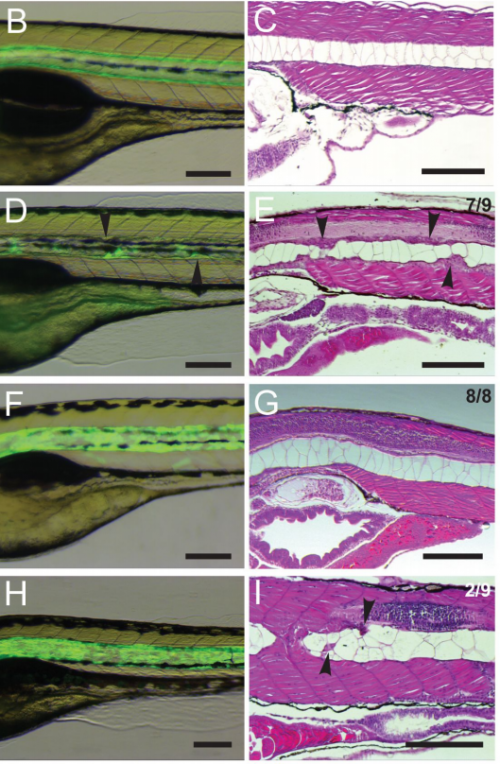
Active Receptor Tyrosine Kinases, but not Brachyury, are sufficient to trigger chordoma in zebrafish
Gianluca D’Agati, Elena M. Cabello, Karl Frontzek, Elisabeth J. Rushing, Robin Klemm, Mark Robinson, Richard M. White, Christian Mosimann, Alexa Burger
Culling less fit neurons protects against amyloid-β induced brain damage and cognitive and motor decline
Dina S Coelho, Silvia Schwartz, Marisa M Merino, Barbara Hauert, Barbara Topfel, Colin Tieche, Christa Rhiner, Eduardo Moreno

Chondrocyte-specific RUNX2 Overexpression Causes Chondrodysplasia During Development, but is Not Sufficient to Induce OA-like Articular Cartilage Degeneration in Adult Mice Without Injury
Sarah E. Catheline, Donna Hoak, Martin Chang, John P Ketz, Matthew J Hilton, Michael J Zuscik, Jennifer H Jonason

Spinocerebellar ataxia type 11-associated alleles of Ttbk2 dominantly interfere with ciliogenesis and cilium stability.
Emily Bowie, Ryan Norris, Kathryn V Anderson, Sarah Goetz
Cytoneme-mediated signaling essential for tumorigenesis
Sol Fereres, Ryo Hatori, Makiko Hatori, Thomas B Kornberg
A giant ankyrin-B mechanism for neuro-diversity/divergence through stochastic ectopic axon projections
Rui Yang, Kathryn K Walder-Christensen, Namsoo Kim, Danwei Wu, Damaris Lorenzo, Alexandra Badea, Shen Gu, Haley Streff, Claudia Soler-Alfonso, Linyan Meng, William C Wetsel, Yong-Hui Jiang, Henry Yin, Vann Bennett
Behavioral changes and growth deficits in a CRISPR engineered mouse model of the schizophrenia-associated 3q29 deletion
Timothy P. Rutkowski, Ryan H. Purcell, Rebecca M. Pollak, Stephanie M. Grewenow, Georgette M. Gafford, Tamika Malone, Uswa Khan, Jason P. Schroeder, Michael P. Epstein, Gary J. Bassell, Stephen T. Warren, David Weinshenker, Tamara Caspary, Jennifer Gladys Mulle
Re-expression of SynGAP Protein in Adulthood Improves Translatable Measures of Brain Function and Behavior in a Model of Neurodevelopmental Disorders
Thomas Creson, Camilo Rojas, Ernie Hwaun, Thomas Vaissiere, Murat Kilinc, J. Lloyd Holder Jr., Jianrong Tang, Laura Lee Colgin, Courtney A. Miller, Gavin Rumbaugh
661W photoreceptor cell line as a cell model for studying retinal ciliopathies
Gabrielle Wheway, Liliya Nazlamova, Dann Turner, Stephen Cross
Reversing Abnormal Neural Development by Inhibiting OLIG2 in Down Syndrome Human iPSC Brain Organoids and Neuronal Mouse Chimeras
Ranjie Xu, Andrew Brawner, Shenglan Li, Hyosung Kim, Haipeng Xue, Zhiping Pang, Woo-Yang Kim, Ronald Hart, Ying Liu, Peng Jiang
| Plant development
A stress-response-related inter-compartmental signalling pathway regulates embryonic cuticle integrity in Arabidopsis
Audrey Creff, Lysiane Brocard, Jerome Joubes, Ludivine Taconnat, Nicolas M Doll, Stéphanie Pascal, Roberta Galletti, Anne-Charlotte Marsollier, Steven Moussu, Thomas Widiez, Frédéric Domergue, Gwyneth Christina Ingram
The Flowering Hormone Florigen Accelerates Secondary Cell Wall Biogenesis to Harmonize Vascular Maturation with Reproductive Development
Akiva Shalit-Kaneh, Tamar Eviatar-Ribak, Guy Horev, Naomi Suss, Roni Aloni, Yuval Eshed, Eliezer Lifschitz
Effects of FLOWERING LOCUS T on FD during the transition to flowering at the shoot apical meristem of Arabidopsis thaliana
Silvio Collani, Manuela Neumann, Levi Yant, Markus Schmid
PERPETUAL FLOWERING2 coordinates the vernalization response and perennial flowering in Arabis alpina
Ana Lazaro, Yanhao Zhou, Miriam Giesguth, Kashif Nawaz, Sara Bergonzi, Ales Pecinka, George Coupland, Maria C Albani
Spatiotemporal expression of FRIGIDA modulate flowering time in Arabidopsis thaliana
Xiangxiang Kong, Jinjie Zhao, Landi Luo, Qian Chen, Guanxiao Chang, Jingling Huang, Yongping Yang, Xiangyang Hu
Epigenetic signatures associated with imprinted paternally-expressed genes in the Arabidopsis endosperm
Claudia Kohler, Jordi Moreno-Romero, Gerardo Del Toro De León, Vikash Kumar Yadav, Juan Santos-González
Differences in effective ploidy as drivers of genome-wide endosperm expression asymmetries and seed failure in wild tomato hybrids
Morgane Roth, Ana M Florez-Rueda, Thomas Staedler
CrRLK1L receptor-like kinases HERK1 and ANJEA are female determinants of pollen tube reception
Sergio Galindo-Trigo, Noel Blanco-Tourinan, Thomas A DeFalco, Cyril Zipfel, Julie E Gray, Lisa M Smith
In vivo phosphatidylserine variations steer Rho GTPase signaling in a cell-context dependent manner
Matthieu Pierre Platre, Vincent Bayle, Laia Armengot, Joseph Bareille, Maria Mar Marques-Bueno, Audrey Creff, Lilly Maneta-Peyret, Jean-Bernard Fiche, Marcelo Nolmann, Christine Miege, Patrick Moreau, Alexandre Martiniere, Yvon Jaillais
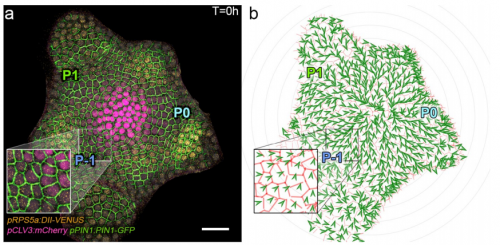
From spatio-temporal morphogenetic gradients to rhythmic patterning at the shoot apex
Carlos Samuel Galvan-Ampudia, Guillaume Cerutti, Jonathan Legrand, Romain Azais, Géraldine Brunoud, Steven Moussu, Christian Wenzl, Jan Lohmann, Christophe Godin, Teva Vernoux
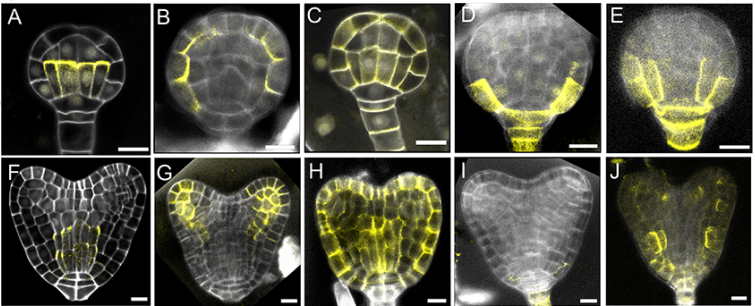
A SOSEKI-based coordinate system interprets global polarity cues in Arabidopsis
Saiko Yoshida, Alja van der Schuren, Maritza van Dop, Luc van Galen, Shunsuke Saiga, Milad Adibi, Barbara Moller, Peter Marhavy, Richard Smith, Jiri Friml, Dolf Weijers
The AGC protein kinase UNICORN controls planar growth by attenuating PDK1 in Arabidopsis thaliana
Sebastian Scholz, Janys Plessmann, Regina Huettl, Katrin Wassmer, Balaji Enugutti, Kay Schneitz
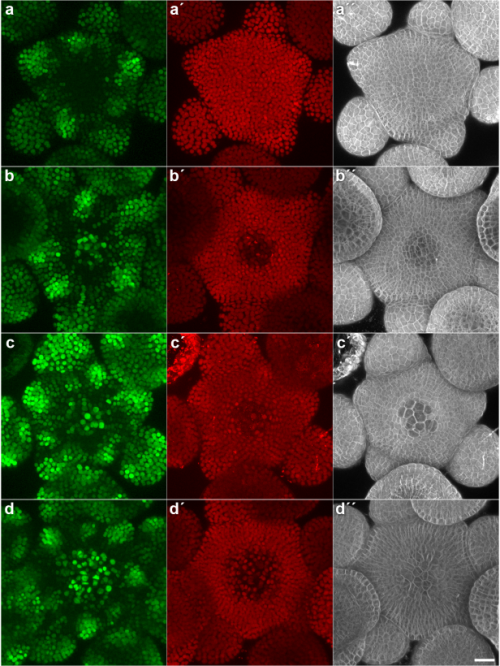
WUSCHEL acts as a rheostat on the auxin pathway to maintain apical stem cells in Arabidopsis
Yanfei Ma, Andrej Miotk, Zoran Sutikovic, Anna Medzihradszky, Christian Wenzl, Olga Ermakova, Christophe Gaillochet, Joachim Forner, Goedze Utan, Klaus Brackmann, Carlos S. Galvan-Ampudia, Teva Vernoux, Thomas Greb, Jan U. Lohmann
Effect of simulated microgravity on gene expression during embryogenesis of Arabidopsis thaliana
Michaela Švecérová, Markéta Kovalová, Vladan Ondřej
Remote control of alternative splicing in roots through TOR kinase
Ezequiel Petrillo, Stefan Riegler, Armin Fuchs, Lucas Servi, Micaela A. Godoy Herz, Maria Guillermina Kubaczka, Peter Venhuizen, Alois Schweighofer, Alberto R Kornblihtt, Craig Simpson, John W.S. Brown, Christian Meyer, Maria Kalyna, Andrea Barta
ARF5/MONOPTEROS directly regulates miR390 expression in the Arabidopsis thaliana primary root meristem
Mouli Ghosh Dastidar, Andrea Scarpa, Ira Maegele, Paola Ruiz Duarte, Patrick von Born, Lotte Bald, Virginie Jouannet, Alexis Maizel
Systems approaches provide new insights into Arabidopsis thaliana root growth under mineral nutrient limitation
Nadia Bouain, Arthur Korte, Santosh B. Satbhai, Seung Y. Rhee, Wolfgang Busch, Hatem Rouached
The embryonic transcriptome of Arabidopsis thaliana
Falko Hofmann, Michael A Schon, Michael D Nodine
Transcriptome dynamics in developing leaves from C3 and C4 Flaveria species reveal determinants of Kranz anatomy
Kumari Billakurthi, Thomas Jan Wrobel, Andrea Braeutigam, Andreas Weber, Peter Westhoff, Udo Gowik
A wheat/rye polymorphism affects seminal root length and is associated with drought and waterlogging tolerance
Tyson Howell, Jorge I. Moriconi, Xueqiang Zhao, Joshua Hegarty, Tzion Fahima, Guillermo Santa-Maria, Jorge Dubcovsky
The interaction between genotype and maternal nutritional environments affects tomato seed and seedling quality
Nafiseh Geshnizjani, Saadat Sarikhani Khorami, Leo A.J. Willems, Basten L. Snoek, Henk Hilhorst, Wilco Ligterink
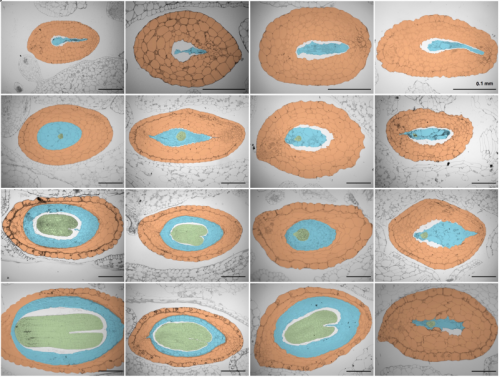
Mechanisms driving endosperm-based hybrid incompatibilities: insights from hybrid monkeyflowers
Taliesin J Kinser, Ronald D Smith, Amelia H Lawrence, Arielle M Cooley, Mario Vallejo-Marín, GD Conradi Smith, Joshua R Puzey
Transcriptomic response to divergent selection for flowering time in maize reveals convergence and key players of the underlying gene regulatory network
Maud I Tenaillon, Khawla Seddiki, Maeva Mollion, Martine Le Guilloux, Elodie Marchadier, Adrienne Ressayre, Christine Dillmann
A genome-wide analysis of the cellulose synthase-like (Csl) gene family in maize (Zea mays)
Yongkai Li, Xiaojie Cheng, Yaqin Fu, Qinqin Wu, Yuli Guo, Jiayu Peng, Wei Zhang, Bin He
Meiotic effects of MSH4 copy number variation support an adaptive role for post-polyploidy gene loss
Adrian Gonzalo, Marie-Odile Lucas, Catherine Charpentier, Andrew H Lloyd, Eric Jenczewski
Transcriptional landscape of soybean (Glycine max) embryonic axes during germination in the presence of paclobutrazol, a gibberellin biosynthesis inhibitor
Rajesh Kumar Gazara, Eduardo A. G. de Oliveira, Antonia Elenir A. Oliveira, Thiago M. Venancio
Epigenetics of floral homeotic genes in relation to sexual dimorphism in the dioecious plant Mercurialis annua
Janardan Khadka, Narendra Singh Yadav, Micha Guy, Gideon Grafi, Avi Golan-Goldhirsh
Physiological regulation of bud burst in grapevine
Santiago Signorelli, Jeremy Shaw, Dina Hermawaty, Zi Wang, Pieter Verboven, John Anthony Considine, Michael J Considine
Determining targeting specificity of nuclear-encoded organelle proteins with the self-assembling split fluorescent protein toolkit
Mayank Sharma, Carola Kretschmer, Christina Lampe, Johannes Stuttmann, Ralf Bernd Klosgen
Phosphoproteomics of Arabidopsis Highly ABA-Induced1 identifies AT-Hook Like10 phosphorylation required for stress growth regulation
Min May Wong, Govinal Badiger Bhaskara, Tuan-Nan Wen, Wen-Dar Lin, Thao Thi Nguyen, Geeng Loo Chong, Paul Verslues
HNI9 and HY5 maintain ROS homeostasis under high nitrogen provision in Arabidopsis
Fanny Bellegarde, Amel Maghiaoui, Jossia Boucherez, Gabriel Krouk, Laurence Lejay, Lien Bach, Alain Gojon, Antoine Martin
Excess light priming in Arabidopsis thaliana with altered DNA methylomes
Bethany AB Stone, Diep R Ganguly, Steven R Eichten, Barry J Pogson
Functional dissection of the ARGONAUTE7 promoter
J Steen Hoyer, Jose L Pruneda-Paz, Ghislain Breton, Mariah A Hassert, Emily E Holcomb, Halley Fowler, Kaylyn M Bauer, Jacob Mreen, Steve A Kay, James C Carrington
A novel model plant to study the light control of seed germination
Zsuzsanna Merai, Kai Graeber, Per Wilhelmsson, Kristian K. Ullrich, Waheed Arshad, Christopher Grosche, Danuse Tarkowska, Veronika Tureckova, Miroslav Strnad, Stefan A. Rensing, Gerhard Leubner-Metzger, Ortrun Mittelsten Scheid
Single-cell transcriptome analysis of Physcomitrella leaf cells during reprogramming using microcapillary manipulation
Minoru Kubo, Tomoaki Nishiyama, Yosuke Tamada, Ryosuke Sano, Masaki Ishikawa, Takashi Murata, Akihiro Imai, Daniel Lang, Taku Demura, Ralf Reski, Mitsuyasu Hasebe
Evo-devo & evo
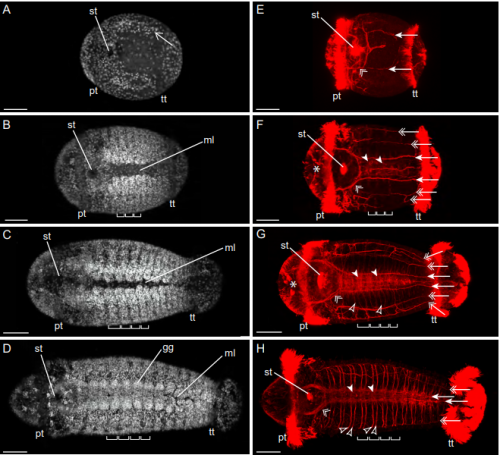
Functional role of pax6 in eye and central nervous system development in the annelid Capitella teleta
Marleen Klann, Elaine C Seaver
Stem cell differentiation trajectories in Hydra resolved at single-cell resolution
Stefan Siebert, Jeffrey A. Farrell, Jack F. Cazet, Yashodara Abeykoon, Abby S. Primack, Christine E. Schnitzler, Celina E. Juliano
tartan underlies the evolution of male genital morphology
Joanna F. D. Hagen, Claudia C. Mendes, Kentaro M. Tanaka, Pedro Gaspar, Maike Kittelmann, Alistair P. McGregor, Maria D. S. Nunes
Convergent recruitment of life cycle regulators to direct sporophyte development in two eukaryotic supergroups
Alok Arun, Susana M. Coelho, Akira F Peters, Simon Bourdareau, Laurent Pérès, Delphine Scornet, Martina Strittmatter, Agnieszka P Lipinska, Haiqin Yao, Olivier Godfroy, Gabriel J Montecinos, Komlan Avia, Nicolas Macaisne, Christelle Troadec, Abdelhafid Bendahmane, J. Mark Cock
Plastic multicellular development of Myxococcus xanthus: genotype-environment interactions in a physical gradient
Natsuko Rivera-Yoshida, Alejandro Vasquez Arzola, Juan Antonio Arias Del Angel, Alessio Franci, Michael Travisano, Ana Elena Escalante, Mariana Benitez
Modular co-option of cardiopharyngeal genes during non-embryonic myogenesis
Maria Mandela Pruenster, Lorenzo Fabrice Ricci, Federico Brown, Stefano Tiozzo
Analysis of sea star larval regeneration reveals conserved processes of whole-body regeneration across the metazoa
Gregory Cary, Andrew Wolff, Olga Zueva, Joseph Pattinato, Veronica Hinman
ABC-transporter activity and eicosanoid-signaling are required for germ cell migration a basal chordate
Susannah H Kassmer, Delany F Rodriguez, Anthony W De Tomaso
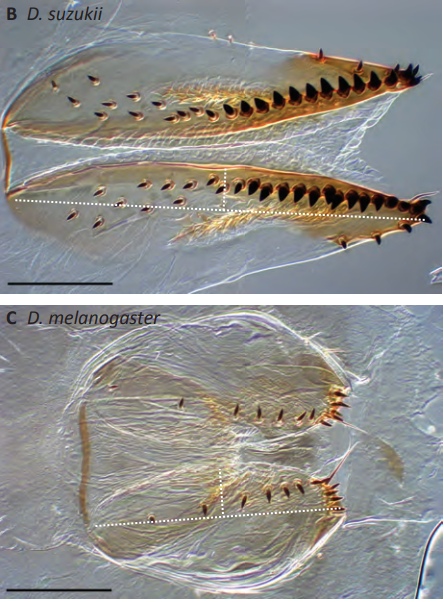
Evolution of ovipositor length in Drosophila suzukii is driven by enhanced cell size expansion and anisotropic tissue reorganization
Jack E Green, Matthieu Cavey, Emmanuelle Caturegli, Nicolas Gompel, Benjamin Prud’homme
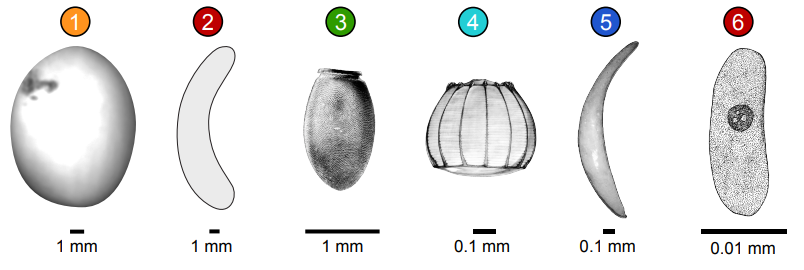
Insect egg size and shape evolve with ecology, not developmental rate
Samuel H. Church, Seth Donoughe, Bruno A. S. de Medeiros, Cassandra G. Extavour
Reproductive capacity evolves in response to ecology through common developmental mechanisms in Hawaiian Drosophila
Didem Pelin Sarikaya, Samuel H. Church, Laura P. Lagomarsino, Steven Montgomery, Karl N. Magnacca, Donald K. Price, Kenenth Y. Kaneshiro, Cassandra G. Extavour
A database of egg size and shape from more than 6,700 insect species
Samuel H. Church, Seth Donoughe, Bruno A. S. de Medeiros, Cassandra G. Extavour
Transcriptome landscape of the developing olive fruit fly embryo delineated by Oxford Nanopore long-read RNA-Seq
Anthony Bayega, Spyros Oikonomopoulos, Eleftherios Zorbas, Yu Chang Wang, Maria-Eleni Gregoriou, Konstantina T Tsoumani, Kostas D Mathiopoulos, Jiannis Ragoussis
Functional lability of RNA-dependent RNA polymerases in animals
Natalia Pinzón, Stéphanie Bertrand, Lucie Subirana, Isabelle Busseau, Hector Escrivá, Hervé Seitz
Drift and directional selection are the evolutionary forces driving gene expression divergence in eye and brain tissue of Heliconius butterflies
Ana Catalan, Adriana D. Briscoe, Sebastian Hoehna
Evolutionary transition in accessible chromatin landscapes during vertebrate embryogenesis
Masahiro Uesaka, Shigeru Kuratani, Hiroyuki Takeda, Naoki Irie
Evolution of Nodal and Nodal-related genes and the putative composition of the heterodimer that triggers the Nodal pathway in vertebrates
Juan C. Opazo, Shigehiro Kuraku, Kattina Zavala, Jessica Toloza-Villalobos, Federico G. Hoffmann
Regulatory changes in pterin and carotenoid genes underlie balanced color polymorphisms in the wall lizard
Pedro Andrade, Catarina Pinho, Guillem Perez i de Lanuza, Sandra Afonso, Jindrich Brejcha, Carl-Johan Rubin, Ola Wallerman, Paulo Pereira, Stephen J. Sabatino, Adriana Bellati, Daniele Pellitteri-Rosa, Zuzana Bosakova, Miguel A. Carretero, Nathalie Feiner, Petr Marsik, Francisco Pauperio, Daniele Salvi, Lucile Soler, Geoffrey M. While, Tobias Uller, Enrique Font, Leif Andersson, Miguel Carneiro
Chromosome-wide evolution and sex determination in a nematode with three sexes
Sophie Tandonnet, Georgios Koutsovoulos, Sally Adams, Delphine Cloarec, Manish Parihar, Mark Blaxter, Andre Pires da Silva
A clinal polymorphism in the insulin signaling transcription factor foxo contributes to life-history adaptation in Drosophila
Esra Durmaz, Subhash Rajpurohit, Nicolas Betancourt, Daniel K. Fabian, Martin Kapun, Paul Schmidt, Thomas Flatt
Selection at behavioral, developmental and metabolic genes is associated with the northward expansion of a successful tropical colonizer
Yann Bourgeois, Stephane Boissinot
Behavioral evolution drives hindbrain diversification among Lake Malawi cichlid fish
Ryan York, Allie Byrne, Kawther Abdilleh, Chinar Patil, J. Todd Streelman, Thomas Finger, Russell Fernald
Analysis of structural variants in four African cichlids highlights an association with developmental and immune related genes
Luca Penso Dolfin, Angela Man, Wilfried Haerty, Federica Di-Palma
Selection, linkage, and population structure interact to shape genetic variation among threespine stickleback genomes
Thomas C Nelson, Johnathan G Crandall, Catherine M Ituarte, Julian M Catchen, William Cresko
Predominance of cis-regulatory changes in parallel expression divergence of sticklebacks.
Jukka-Pekka Verta, Felicity Jones
Evolution of the D. melanogaster chromatin landscape and its associated proteins
Elise Parey, Anton Crombach
Rampant hybrid misexpression in craniofacial tissues within a recent adaptive radiation of Cyprinodon pupfishes
Joseph Alan McGirr, Christopher Herbert Martin
A phylogenomic framework, evolutionary timeline, and genomic resources for comparative studies of decapod crustaceans
Joanna M. Wolfe, Jesse W. Breinholt, Keith A Crandall, Alan R. Lemmon, Emily Moriarty Lemmon, Laura E. Timm, Mark E. Siddall, Heather D. Bracken-Grissom
Size, shape and structure of insect wings
Mary K Salcedo, Jordan Hoffmann, Seth Donoughe, Lakshminarayanan Mahadevan
Reorganization of 3D Genome Structure May Contribute to Gene Regulatory Evolution in Primates
Ittai E Eres, Kaixuan Luo, Chiaowen Joyce Hsiao, Lauren E Blake, Yoav Gilad
Widespread conservation of chromatin accessibility patterns and transcription factor binding in human and chimpanzee induced pluripotent stem cells
Irene Gallego Romero, Shyam Gopalakrishnan, Yoav Gilad
The convergent evolution of eusociality is based on a shared reproductive groundplan plus lineage-specific sets of plastic genes
Michael R Warner, Lijun Qiu, Michael J Holmes, Alexander S Mikheyev, Timothy A Linksvayer
Evolution of limb development in cephalopod mollusks
Oscar A. Tarazona, Davys H. Lopez, Leslie A Slota, Martin J. Cohn
Cell biology

An F-actin shell ruptures the nuclear envelope by sorting pore-dense and pore-free membranes in meiosis of starfish oocytes
Natalia Wesolowska, Pedro Machado, Celina Geiss, Hiroshi Kondo, Masashi Mori, Yannick Schwab, Peter Lenart
Mammalian kinetochores count attached microtubules in a sensitive and switch-like manner to control cell cycle progression
Jonathan Alexander Kuhn, Sophie Dumont
Differential requirement for centriolar satellites in cilium formation among different vertebrate cells
Ezgi Odabasi, Signe K Ohlsen, Seref Gul, Halil I Kavakli, Jens S Andersen, Elif N Firat-Karalar
YAP independently regulates cell size and population growth dynamics via non-cell autonomous mediators
Douaa Mugahid, Marian Kalocsay, Scott Gruver, Leonid Peshkin, Marc W Kirschner
Cell growth dilutes the cell cycle inhibitor Rb to trigger cell division
Evgeny Zatulovskiy, Daniel F. Berenson, Benjamin R. Topacio, Jan M. Skotheim
A spatially regulated GTPase cycle of Rheb controls growth factor signaling to mTORC1
Marija Kovacevic, Christian H Klein, Lisaweta Rossmannek, Antonios D Konitsiotis, Angel Stanoev, Astrid U Kraemer, Philippe Bastiaens
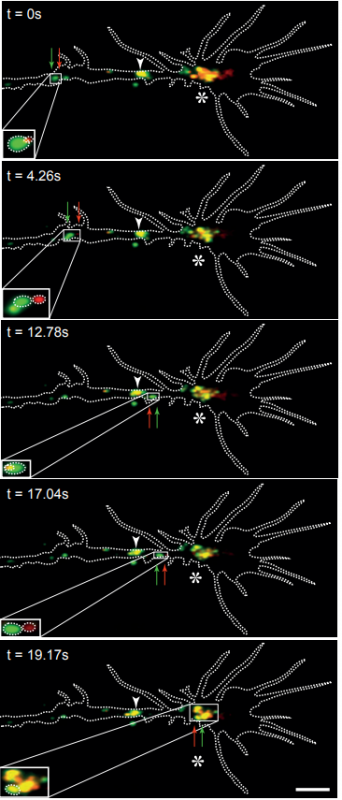
Precursor miRNAs are trafficked along axons associated with vesicles and locally processed to regulate growth cone steering
Eloina Corradi, Antoneta Gavoci, Stephanie Strohbuecker, Michela Roccuzzo, Irene Dalla Costa, Archana Iyer, Simone Bridi, Gabriela Santoz Rodriguez, Cei Abreu-Goodger, Marie-Laure Baudet
Enhanced cell-cell contact stability upon Fibroblast Growth factor Receptor/N-cadherin cross-talk
Thao Nguyen, Laurence Duchesne, Nicole Bogetto, David Fernig, Chandra Murade, Benoit Ladoux, Rene-Marc Mege
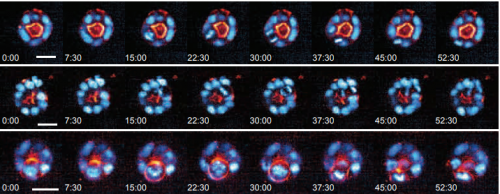
The interaction between the tumour suppressor Dlg1 and the MAGUK protein CASK is required for oriented cell division in mammalian epithelia
Andrew Phillip Porter, Gavin White, Natalie A Mack, Angeliki Malliri
Rapid Whole Cell Imaging Reveals An APPL1-Dynein Nexus That Regulates Stimulated EGFR Trafficking
Harrison York, Amandeep Kaur, Abhishek Patil, Aditi Bhowmik, Ullhas K Moorthi, Geoffrey J Hyde, Hetvi Gandhi, Katharina Gaus, Senthil Arumugam
The voltage sensing phosphatase (VSP) localizes to the apical membrane of kidney tubule epithelial cells
Wil Ratzan, Vamsee Rayaprolu, Scott E Killian, Roger Bradley, Susy Kohout
The repressive genome compartment is established early in the cell cycle before forming the lamina associated domains
Teresa Romeo Luperchio, Michael E.G. Sauria, Victoria E Hoskins, Wong Xianrong, Emily DeBoy, Marie-Cecile Gaillard, Peter Tsang, Katja Pekrun, Robert A Ach, Alice Yamada, James Taylor, Karen L Reddy
Modelling
Using a continuum model to decipher the mechanics of embryonic tissue spreading from time-lapse image sequences: An approximate Bayesian computation approach
Tracy Stepien, Holley E. Lynch, Shirley X. Yancey, Laura Dempsey, Lance A. Davidson
Entropic forces drive cellular contact guidance
Gitta Buskermolen, Hamsini Suresh, Siamak Shishvan, Andrea Vigliotti, Antonio deSimone, Nicholas Kurniawan, Carlijn Bouten, Vikram Deshpande
Field induced cell proliferation and death in a thick epithelium
Niladri Sarkar, Jacques Prost, Frank Julicher
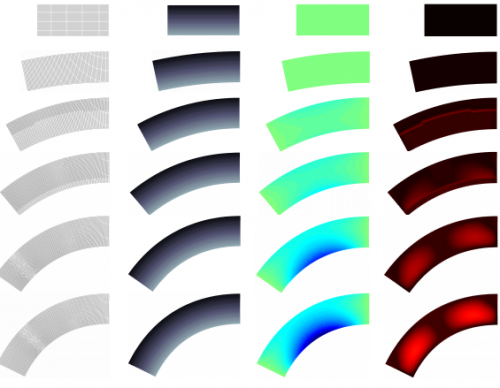
Discrete Mechanical Growth Model for Plant Tissue
Louis Daniel Weise, Kirsten H.W.J. ten Tusscher
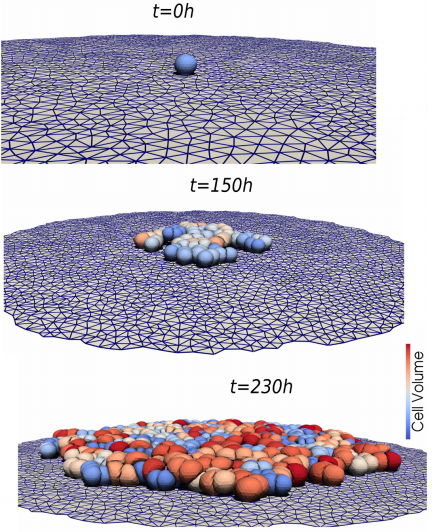
Quantifying the mechanics and growth of cells and tissues in 3D using high resolution computational models.
Paul Van Liedekerke, Johannes Neitsch, Tim Johann, Enrico Warmt, Steffen Grosser, Ismael Gonzales Valverde, Josef Kaes, Stefan Hoehme, Dirk Drasdo
Towards control of cellular decision-making networks in the epithelial-to-mesenchymal transition
Jorge Gómez Tejeda Zañudo, M. Tyler Guinn, Kevin Farquhar, Mariola Szenk, Steven N. Steinway, Gábor Balázsi, Réka Albert
Maintaining the stem cell niche in multicellular models of epithelia
Claire Miller, Edmund Crampin, James Osborne
Reconstructing probabilistic trees of cellular differentiation from single-cell RNA-seq data
Miriam Shiffman, William T. Stephenson, Geoffrey Schiebinger, Jonathan Huggins, Trevor Campbell, Aviv Regev, Tamara Broderick
Theory of mechano-chemical patterning in biphasic biological tissues
P. Recho, A. Hallou, E. Hannezo
Biophysics and population size constrains speciation in an evolutionary model of developmental system drift
Bhavin S Khatri, Richard Goldstein
Ring shape Golden Ratio multicellular structures are algebraically afforded by asymmetric mitosis and one to one cell adhesion
William Butler, T. Bernard Kinane
Tools & resources
Science Family skills: An Alexa Assistant Tailored for Laboratory Routine
Tiago Lubiana-Alves, Helder I Nakaya

Multi-sample SPIM image acquisition, processing and analysis of vascular growth in zebrafish
Stephan Daetwyler, Ulrik Günther, Carl D. Modes, Kyle Harrington, Jan Huisken
Fast, multicolor 3-D imaging of brain organoids with a new single-objective two-photon virtual light-sheet microscope
Irina Rakotoson, Brigitte Delhomme, Philippe Djian, Andreas Deeg, Maia Brunstein, Christian Seebacher, Rainer Uhl, Clement Ricard, Martin Oheim
Low-cost, sub-micron resolution, wide-field computational microscopy using opensource hardware
Tomas Aidukas, Regina Eckert, Andrew R Harvey, Laura Waller, Pavan Chandra Konda
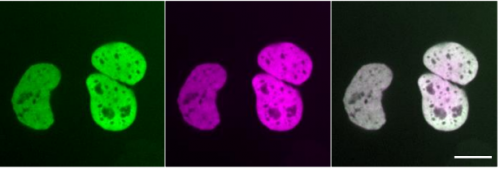
A genetically encoded probe for imaging HA-tagged protein translation, localization, and dynamics in living cells and animals
Ning Zhao, Kouta Kamijo, Philip Fox, Haruka Oda, Tatsuya Morisaki, Yuko Sato, Hiroshi Kimura, Timothy J. Stasevich
Induction of Interferon-Stimulated Genes and Cellular Stress Pathways by Morpholinos
Jason Kuan Han Lai, Kristina Gagalova, Didier Y. R. Stainier
Swift Large-scale Examination of Directed Genome Editing (SLEDGE Hammer)
Omar T. Hammouda, Thomas Thumberger, Joachim Wittbrodt
Flexible, fast and selective genetic manipulation of the vertebrate CNS with misPiggy
Michal Slezak, Filip de Vin, Yohei Shinmyo, Mykhailo Y Batiuk, Melvin Y Rincon, Carmen Menacho Pando, Johann Urschitz, Stefan Moisyadi, Frank Schnuetgen, Hiroshi Kawasaki, Matthew G Holt
Generation of Cynomolgus Monkeys (Macaca fascicularis) Embryos with ICSI Based on the MII-Stage Oocytes Acquired by Personalized Superovulation Protocol
Kaili Ma, Zhangqiong Huang, Yun Li, Qinfang Jiang, Yixuan Wang, Qihan Li
Deep Phenotyping Enhances Somatic Mutant Detection and Mosaic Pattern Recognition in the Zebrafish Skeleton
Claire J. Watson, Adrian T. Monstad-Rios, Rehaan M. Bhimani, Charlotte Gistelinck, Andy Willaert, Paul J. Coucke, Yi-Hsiang Hsu, Ronald Y. Kwon
Strategies For Efficient Genome Editing Using CRISPR-Cas9
Barbara J. Meyer, Behnom Farboud, Aaron Severson
Cell-specific CRISPR/Cas9 activation by microRNA-dependent expression of anti-CRISPR proteins
Mareike Daniela Hoffmann, Sabine Aschenbrenner, Stefanie Grosse, Kleopatra Rapti, Claire Domenger, Julia Fakhiri, Manuel Mastel, Roland Eils, Dirk Grimm, Dominik Niopek
CRISPR/Cas12a-assisted PCR tagging of mammalian genes
Julia Fueller, Matthias Meurer, Konrad Herbst, Krisztina Gubicza, Bahtiyar Kurtulmus, Julia D. Knopf, Daniel Kirrmaier, Benjamin Buchmuller, Gislene Pereira, Marius K. Lemberg, Michael Knop
BAPC-assisted CRISPR/Cas9 System: Targeted Delivery into Adult Ovaries for Heritable Germline Gene Editing (Arthropoda: Hemiptera)
Wayne B. Hunter, Maria T. Gonzalez, John Tomich
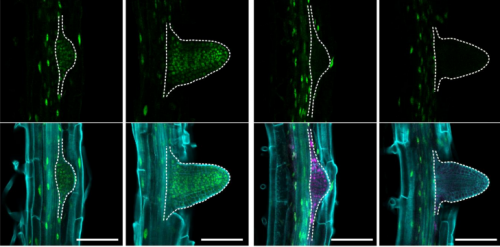
CRISPR-TSKO facilitates efficient cell type-, tissue-, or organ-specific mutagenesis in Arabidopsis
Ward Decaestecker, Rafael Andrade Buono, Marie L. Pfeiffer, Nick Vangheluwe, Joris Jourquin, Mansour Karimi, Gert Van Isterdael, Tom Beeckman, Moritz K. Nowack, Thomas B. Jacobs
Comparison of efficiency and specificity of CRISPR-associated (Cas) nucleases in plants: An expanded toolkit for precision genome engineering
Oleg Raitskin, Christian Schudoma, Anthony West, Nicola J Patron
Massively parallel profiling and predictive modeling of the outcomes of CRISPR/Cas9-mediated double-strand break repair
Wei Chen, Aaron McKenna, Jacob Schreiber, Yi Yin, Vikram Agarwal, William Stafford Noble, Jay Shendure
Unbiased detection of CRISPR off-targets in vivo using DISCOVER-Seq
Beeke Wienert, Stacia K Wyman, Christopher D Richardson, Charles D Yeh, Pinar Akcakaya, Michelle J Porritt, Michaela Morlock, Jonathan T Vu, Katelynn R Kazane, Hannah L Watry, Luke M Judge, Bruce R Conklin, Marcello Maresca, Jacob E Corn
aFARP-ChIP-seq, a convenient and reliable method for genome profiling in as few as 100 cells with a capability for multiplexing ChIP-seq
Wenbin Liu, Sibiao Yue, Xiaobin Zheng, Jia Cao, Yixian Zheng
RNA sequencing data: hitchhiker’s guide to expression analysis
Koen Van Den Berge, Katharina Hembach, Charlotte Soneson, Simone Tiberi, Lieven Clement, Michael I Love, Rob Patro, Mark Robinson
Linked-read sequencing of gametes allows efficient genome-wide analysis of meiotic recombination
Hequan Sun, Beth A Rowan, Pádraic J Flood, Ronny Brandt, Janina Fuss, Angela M Hancock, Richard W Michelmore, Bruno Huettel, Korbinian Schneeberger
PlotsOfData – a web app for visualizing data together with its summaries
Marten Postma, Joachim Goedhart
Research practice & education
Developing Future Biologists: creating and assessing a portable short course to engage underrepresented undergraduate students in developmental biology
Justine M. Pinskey, Eden A. Dulka, Andrea I. Ramos, Martha L. Echevarría-Andino, David S. Lorberbaum, Brandon S. Carpenter, Jorge Y. Martinez-Marquez, Breane G. Budaitis, Emily M. Holloway, Samhitha Raj, Alana M. Chin, Edu Suarez, Laura A. Buttitta, Deb L. Gumucio, Deneen M. Wellik, Ryan Insolera, Leilani Marty-Santos, Benjamin L. Allen, Scott Barolo
Building a local community of practice in scientific programming for Life Scientists
Sarah L.R. Stevens, Mateusz Kuzak, Carlos Martinez, Aurelia Moser, Petra M. Bleeker, Marc Galland
Ten Simple Rules for Scientific Fraud & Misconduct
Nicolas P Rougier, John Timmer
Departmental-level approaches to gender equity in biology
Christiana J McDonald-Spicer, Benjamin Schwessinger, Susan Howitt
Participation and Motivations of Grant Peer Reviewers: A Comprehensive Survey of the Biomedical Research Community
Stephen A Gallo, Lisa A Thompson, Karen B Schmaling, Scott R Glisson
Why not…
The impact of modern jazz dance on the electrical brain activity
Johanna Wind, Wolfgang Schöllhorn
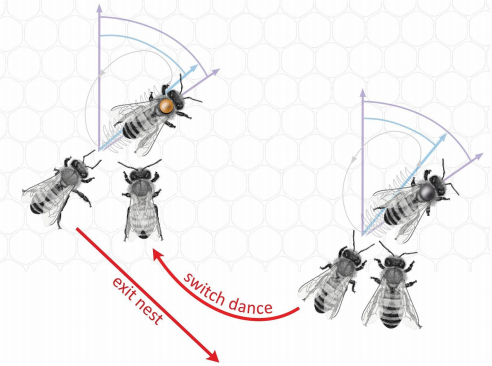
Followers of honey bee waggle dancers change their behavior when dancers are sleep-restricted or perform imprecise dances
Barrett Anthony Klein, Michael Vogt, Keaton Unrein, David M. Reineke


 (No Ratings Yet)
(No Ratings Yet) There is already a prevailing feeling that this work may be false. Certainly it is very difficult to know exactly what has gone on, with the limited information available thus far. I would agree with many other commentators that it is simply too soon to attempt human genome editing in embryos. For one thing there are obvious concerns about off-target effects and overall safety. I am also not convinced of the argument for attempting to make this particular modification. This doesn’t mean such edits are necessarily wrong, but I am not convinced a compelling case has been made especially given the risks.
There is already a prevailing feeling that this work may be false. Certainly it is very difficult to know exactly what has gone on, with the limited information available thus far. I would agree with many other commentators that it is simply too soon to attempt human genome editing in embryos. For one thing there are obvious concerns about off-target effects and overall safety. I am also not convinced of the argument for attempting to make this particular modification. This doesn’t mean such edits are necessarily wrong, but I am not convinced a compelling case has been made especially given the risks.
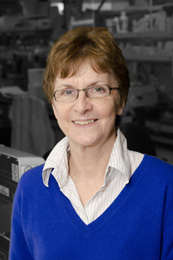 This announcement from the group in China led by JianKui He is a very unfortunate and unwise development. The consensus from almost every working group internationally, including the National Academies Working Group, of which I was a part, has been that we need to move cautiously on possible germline editing in terms of safety and efficacy and that, even when these barriers are met, this approach would only be used for preventing serious genetic disease, where there is no other option, and where there has been full oversight, ethical approval and societal consensus. None of these applies to this report; ethical review is under question; his own university has disavowed him; the editing, if true, would count as an enhancement and not necessary for the child to be HIV-free; the long-term consequences in terms of susceptibility to other viral diseases could be damaging. The Chinese academies and academics are united in condemning this work and continued work towards international guidelines and regulation is clearly needed.
This announcement from the group in China led by JianKui He is a very unfortunate and unwise development. The consensus from almost every working group internationally, including the National Academies Working Group, of which I was a part, has been that we need to move cautiously on possible germline editing in terms of safety and efficacy and that, even when these barriers are met, this approach would only be used for preventing serious genetic disease, where there is no other option, and where there has been full oversight, ethical approval and societal consensus. None of these applies to this report; ethical review is under question; his own university has disavowed him; the editing, if true, would count as an enhancement and not necessary for the child to be HIV-free; the long-term consequences in terms of susceptibility to other viral diseases could be damaging. The Chinese academies and academics are united in condemning this work and continued work towards international guidelines and regulation is clearly needed.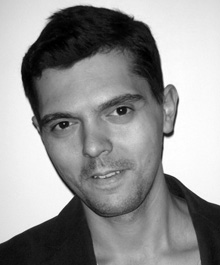 As a reproductive biologist I was tremendously relieved by the nearly universal backlash against this purported achievement. The importance of preclinical safety assessment is paramount, particularly when it comes to procedures with a direct impact on our germ cells and resulting embryos. At the moment we still don’t know just how safe human genome editing really is. Another point this controversy makes abundantly clear is the need to ensure a consistent ethical framework across borders. Science and technology are a global enterprise and should be regulated likewise, especially when it comes to the use of human gametes and embryos for research purposes. I’m concerned with the fact that our currently heterogenous regulatory landscape leaves too much room for unethical and exploitative research.
As a reproductive biologist I was tremendously relieved by the nearly universal backlash against this purported achievement. The importance of preclinical safety assessment is paramount, particularly when it comes to procedures with a direct impact on our germ cells and resulting embryos. At the moment we still don’t know just how safe human genome editing really is. Another point this controversy makes abundantly clear is the need to ensure a consistent ethical framework across borders. Science and technology are a global enterprise and should be regulated likewise, especially when it comes to the use of human gametes and embryos for research purposes. I’m concerned with the fact that our currently heterogenous regulatory landscape leaves too much room for unethical and exploitative research. Tuesday evening here in Houston, I watched Dr. Jiankui He’s talk live through a video link to the 2nd International Summit on Human Genome Editing in Hong Kong. Dr. He presented a large amount of data about the research that led to the generation of the first humans produced with edited genomes, twin girls. Dr. He said a paper describing the results had been submitted for peer review. The gene that was edited using CRISPR technologies was CCR5. CCR5 encodes a receptor required for HIV infection. There is a relatively common loss-of-function allele called D32 in certain human populations such that there are individuals homozygous for this allele that are apparently normal yet resistant to HIV infection. Dr. He reported his group had generated one infant girl homozygous for CCR5 edited alleles and a twin girl that was heterozygous. He reported that the girls were normal and healthy. He also said that there would be an 18-year follow up on the children.
Tuesday evening here in Houston, I watched Dr. Jiankui He’s talk live through a video link to the 2nd International Summit on Human Genome Editing in Hong Kong. Dr. He presented a large amount of data about the research that led to the generation of the first humans produced with edited genomes, twin girls. Dr. He said a paper describing the results had been submitted for peer review. The gene that was edited using CRISPR technologies was CCR5. CCR5 encodes a receptor required for HIV infection. There is a relatively common loss-of-function allele called D32 in certain human populations such that there are individuals homozygous for this allele that are apparently normal yet resistant to HIV infection. Dr. He reported his group had generated one infant girl homozygous for CCR5 edited alleles and a twin girl that was heterozygous. He reported that the girls were normal and healthy. He also said that there would be an 18-year follow up on the children. As for the medical reason claimed by He Jiankui on this clinical trial (protecting the babies from HIV), I do not believe it is justified. It appears to me that he is doing an extremely risky, but completely unnecessary, experiment directly on two innocent HUMAN babies. I am therefore totally horrified for what He has done. Meanwhile, I do feel this is an individual case. Although deeply depressing, it is slightly gratifying to see that the whole Chinese Biology Community is unprecedentedly unified to condemn such an irresponsible, unethical, and illegal behavior. Next, I think multiple levels of investigations are needed to first validate the whole case. And we should give the two innocent girls the privacy and a normal life–or at least as close to be normal as possible. As a global community, we should take this case as a hard lesson to find a better and efficient way on implementing the standards and guidelines.
As for the medical reason claimed by He Jiankui on this clinical trial (protecting the babies from HIV), I do not believe it is justified. It appears to me that he is doing an extremely risky, but completely unnecessary, experiment directly on two innocent HUMAN babies. I am therefore totally horrified for what He has done. Meanwhile, I do feel this is an individual case. Although deeply depressing, it is slightly gratifying to see that the whole Chinese Biology Community is unprecedentedly unified to condemn such an irresponsible, unethical, and illegal behavior. Next, I think multiple levels of investigations are needed to first validate the whole case. And we should give the two innocent girls the privacy and a normal life–or at least as close to be normal as possible. As a global community, we should take this case as a hard lesson to find a better and efficient way on implementing the standards and guidelines. (6 votes)
(6 votes)